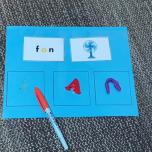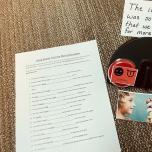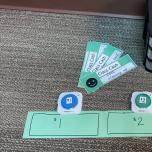October
This month’s focus is on teaching with rigor. The content aligns with Quality Indicator I: Alignment with State Standards and Quality Indicator IV: Differentiated Instruction on the Rubric of Effective Practices for Students with Complex Access Needs and the Administrator Companion Document to the Rubric of Effective Practices for Students with Complex Access Needs. The last couple months, you have been working hard to fine tune your classroom organization and provide structure through routines and procedures. You have spent time nurturing relationships with your students and the adults on their teams. This month, we are going to focus on how to challenge your students through rigorous high-quality instruction without overwhelming them. Download or print the October Monthly Instructional Guide Checklist for your reference.
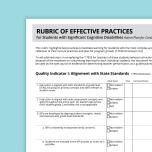
Significant Cognitive Disabilities, Behavior, Instruction, ARD/IEP Supports, Inclusion
Rubric of Effective Practices for Students with Complex Access Needs
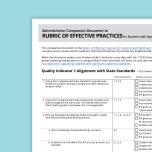
Significant Cognitive Disabilities, ARD/IEP Supports, Instruction, Assistive Technology, Behavior, Inclusion
Administrator Companion Document to the Rubric of Effective Practices for Students with Complex Access Needs
Aim for Autonomy and Independence
As a teacher in a self-contained classroom, you want to encourage as much autonomy and independence for our students as possible.
- Avoid overhelping.
- Engage learners.
Avoid Overhelping
Perhaps the deepest need people have is to feel a sense of control over their life. Many students with complex access needs experience other people making decisions for them all day, every day. Over time these students may lose their motivation, their sense of autonomy, and their independence. Your goal is for students to be engaged in their learning and actively participate as independently as possible.
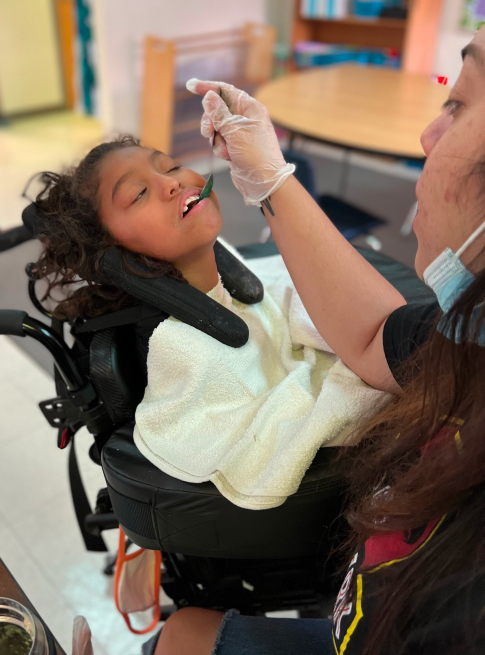
Students may need significant support in self-care skills. Texas SPED Support, 2022
Be cautious about overhelping students. We talked about the concept of presuming competence in the August Monthly Instructional Guide. Presuming competence is the philosophy that all students can learn and participate meaningfully in the world around them. Instead of overhelping and limiting the student’s own participation, scaffold your support during challenging activities to allow the student to participate in their learning as much as they can independently. The Hierarchy of Cueing and Prompting can help you pinpoint the level of support a student may need for any given step in a task. Continually monitor your students’ progress so that you can fade supports and increase rigor at the right times.
Engage Learners
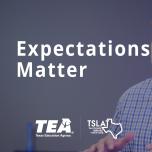
Autism, Transition
Expectations Matter
You have learned so much about your students through your relationship-building efforts. Now is the time to put that information to use to engage your learners. You want to integrate your students’ preferences into your classroom activities, honor their choices, and celebrate their unique strengths while supporting them appropriately in their areas of need. This provides students freedom within safe boundaries to explore, make mistakes, and learn and grow. Have high expectations and teach students to be lifelong learners who can problem-solve, locate information, and ask for help when they need it.
Let Data Drive Instruction
You have been collecting data on a variety of skills, so use that data to drive your instruction.
- Review data regularly.
- Teach missing skills.
- Encourage generalization of skills.
- Fade supports.
Review Data Regularly
Early data serves as a baseline of performance for where the students started out on a task or skill. As you provide instruction or implement an intervention, you continue to track the data to monitor student progress and see what is working and what is not. Review the data regularly to look for trends and adjust strategies as appropriate. As you add supports or make instructional changes, make a note in the data sheets when the adjustments were implemented so you can review the results of that change. If changes were made and proven to be effective, remember to request an ARD committee meeting and adjust the IEP as appropriate.
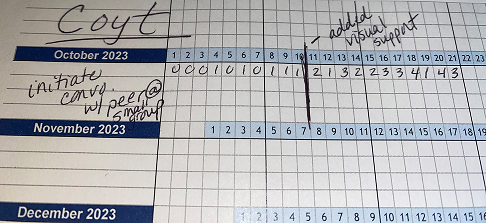
Student performance before and after adding a visual support. Shannon Beyer-Kaminski, 2023
Teach Missing Skills Through Explicit Instruction
If the data shows gaps in student knowledge or skills, set up an instructional plan to teach them that skill. Direct teaching is not limited to just academic content, it applies to functional skills as well. For instance, if a student exhibits an unexpected behavior, we must teach them an appropriate replacement behavior. Explicit instruction involves purposefully designing instruction in a systematic way where students are guided through small steps with appropriate supports.

Explicit Instruction
Encourage Generalization of Skills
Students with complex needs may only be able to complete a task with the same materials, in the same location, or with the same person asking them to complete the activity. As data shows they are making progress on a skill, you can have students work on generalizing the skill by changing up the task conditions, such as using different materials, completing the activity in alternate locations, or having other staff members work with the student on the task. Make sure to note these changes in instruction in your data sheets.
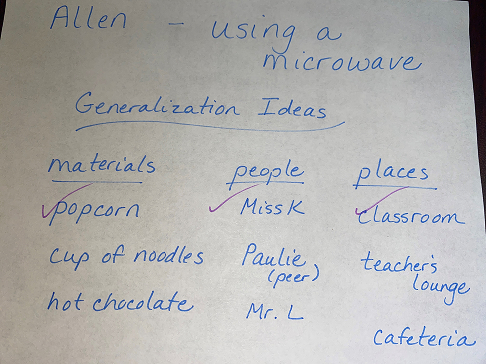
Planning for generalization. Shannon Beyer-Kaminski, 2023
Fade Supports
As students make progress, we want to fade our support to increase their independence. This may mean reducing verbal prompts, removing a visual support, or no longer modeling a task or step for the student. Mark the change in your data sheet so you will remember where you began to fade the support and carefully watch the data in case you need to readjust.
Connect to the Curriculum
To teach with rigor, you must connect your students to the curriculum.
- Understand prerequisite skills.
- Meet learners where they are.
- Make learning meaningful.
Understand Prerequisite Skills
As we mentioned in the August Monthly Instructional Guide, the TEKS are the curriculum for all students in Texas, including students with disabilities. Students in your self-contained classroom may need extensive modifications and accommodations to access and participate in the curriculum, but should still receive rigorous, meaningful TEKS-based instruction.
Your students may be working multiple grade levels below their enrolled grade-level. However, they can still access their grade-level TEKS through connected prerequisite skills. The TEKS Vertical Alignment documents showcase how skills build on each other with increasing difficulty throughout the grade levels. You can start with a student’s enrolled grade-level TEKS to find connected prerequisite skills. There are additional early childhood vertical alignment documents and prekindergarten guidelines that can be helpful. By aligning students’ instruction with their enrolled grade-level standards, we provide them with rigorous and appropriate learning tasks directly connected to the same curriculum their peers are accessing.
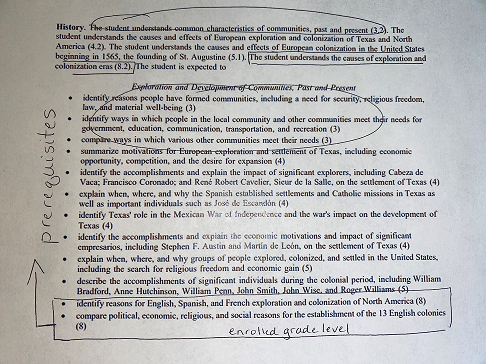
Finding prerequisite skills using the TEKS Vertical Alignment. Shannon Beyer-Kaminski, 2023

Significant Cognitive Disabilities
TEKS
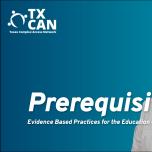
Significant Cognitive Disabilities, Instruction
Considerations for Teaching Prerequisite Skills for Students with Complex Access Needs

Significant Cognitive Disabilities, Instruction, Assistive Technology
Vertical Alignment

TEKS Vertical Alignment Documents

Significant Cognitive Disabilities, Early Childhood
Early Childhood Vertical Alignment

Significant Cognitive Disabilities, Early Childhood
Texas Prekindergarten Guidelines
Meet Learners Where They Are
Each student will bring their own background knowledge and skill set into the classroom. Getting to know your students as individuals is fundamental to providing the instruction they need. For students with complex access needs, this may mean modifying the content to prerequisite skill access points for the concept being taught or providing accommodations to access the instructional materials. The following resources may be helpful in adapting materials and teaching foundational skills to your students.

Monarch Reader

Significant Cognitive Disabilities
Adapted Literature and Lessons

Significant Cognitive Disabilities
Paths to Literacy

Inclusion, Instruction, MTSS
Foundational Reading Lesson Set
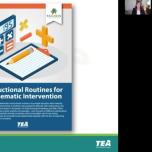
Inclusion, Instruction, MTSS
Instructional Routines for Mathematics Intervention

Significant Cognitive Disabilities, Instruction
Beyond Time and Money: Teaching Mathematics to Students with Complex Access Needs

Autism
Teaching Math to Students with Autism Spectrum Disorder
Sometimes you just need a little inspiration to get you thinking creatively about ways to provide rigorous instruction to students who have non-traditional ways of accessing and participating in the curriculum. Explore these sample activities and then brainstorm ways of adapting lessons to meet your learners where they are.
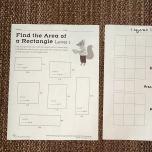
Significant Cognitive Disabilities
Cross-Curricular Project
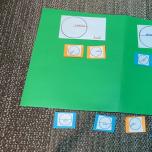
Significant Cognitive Disabilities
Radius and Diameter
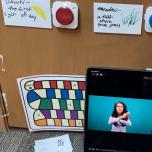
Significant Cognitive Disabilities, Behavior
Tuck Everlasting Vocabulary
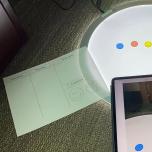
Significant Cognitive Disabilities
Making Observations
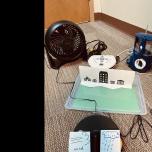
Significant Cognitive Disabilities
Natural Disasters

Significant Cognitive Disabilities
Historical Figures
Make Learning Meaningful
You want to connect your students to the curriculum in meaningful ways. In your self-contained classroom, you have flexibility in designing instruction to meet the needs of your individual learners. Help your students personally connect to the content.
- How can you design lessons that integrate your students’ interests and learning preferences?
- What can you do to connect learning to students’ personal experiences and prepare them for future independence?
- When in your normal classroom schedule and routines can you connect students’ functional and academic goals?
- Where can you integrate real-world connections and project-based learning?
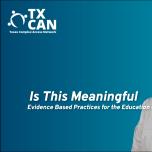
Significant Cognitive Disabilities, Instruction, Transition
Make Learning Meaningful and Promote Independence for Students with Complex Access Needs
Extend Your Learning
Learn more about Quality Indicator I: Alignment with State Standards and Quality Indicator IV: Differentiated Instruction in the free online courses IEPs and Instruction and Designing and Supporting Instruction.

ARD/IEP Supports, Significant Cognitive Disabilities, Instruction
Individualized Education Programs (IEPs) and Instruction

Significant Cognitive Disabilities, Instruction, Assistive Technology
Designing and Supporting Instruction
Final thought: Have high expectations
This month, challenge yourself to develop meaningful lessons that connect to your learners. Keep high expectations, presume competence, and think about ways to increase rigor while scaffolding supports to build independence. Continue to take data to monitor student progress.
Looking Ahead
You may find that some students have a hard time showing what they know in traditional ways during classroom activities. We will talk more about response modes and encouraging students’ communication in the November Monthly Instructional Guide.
